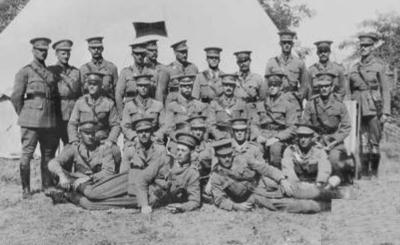William Lang was born 14 May 1893, at Auckland, New Zealand. He went to school at Palmerston North High School, New Zealand. At the age of 15 he came to Australia with his family who settled in the property known as 'Marmora', located on Corner Street, Burwood, New South Wales. At the age of 18 he was amongst the first intake in 1911 for the new Royal Military College Duntroon although due to war demands was specially graduated and commissioned November 1914 when Lang enlisted in the AIF on 3 November 1914 as a Lieutenant with the 6th LHR (Light Horse Regiment), Machine Gun Section. The 6th LHR was part of the 2nd Light Horse Brigade. This unit embarked from Sydney, New South Wales, on board HMAT A29 Suevic on 21 December 1914. After service at Gallipoli and in anticipation of the August offensive, he was given the rank of Temporary Captain on 4 August 1915. Lang was wounded in action on the evening of 6 August 1915 during the attack on Lone Pine. Days later Lang died of wounds on 13 August 1915 while aboard HS Guildford Castle and was buried at sea. His service is recorded on the Lone Pine Memorial (Panel 4), Gallipoli, Turkey.
Note: These images remain copyright to the Steley family but you are free to use them at private study purposes and cannot be used for resale or profit.
(Public Domain Photograph)










